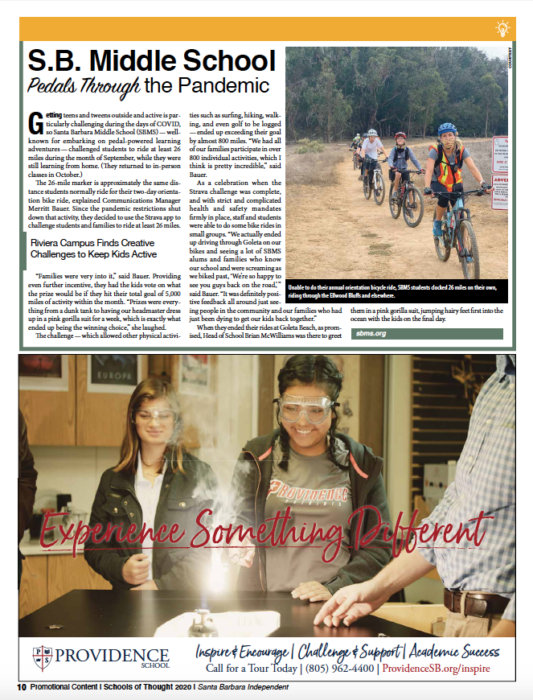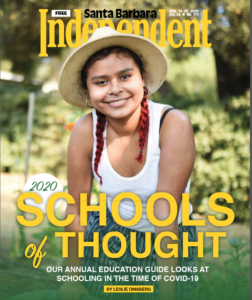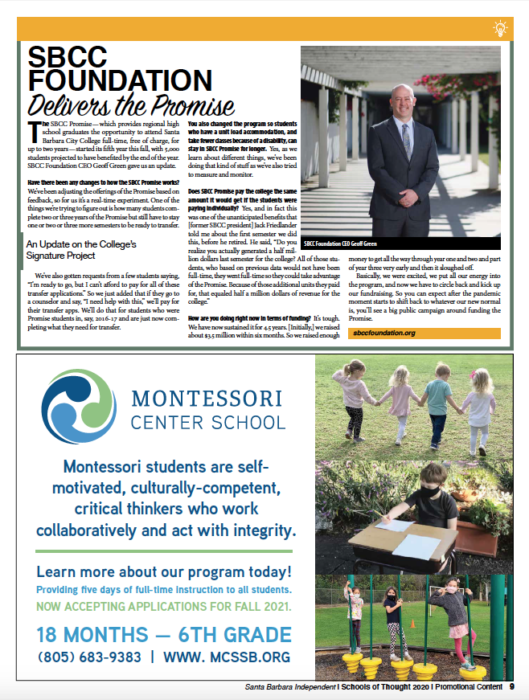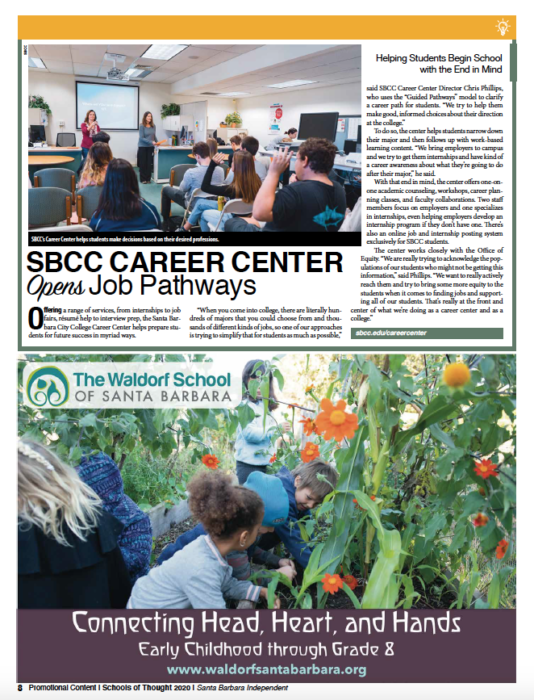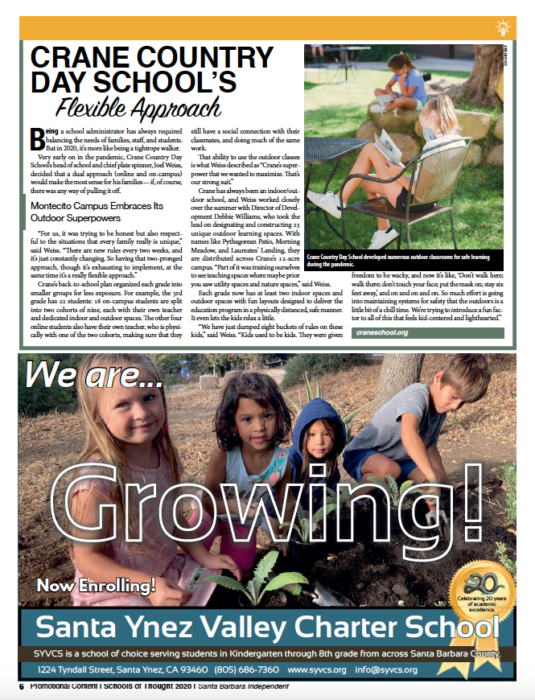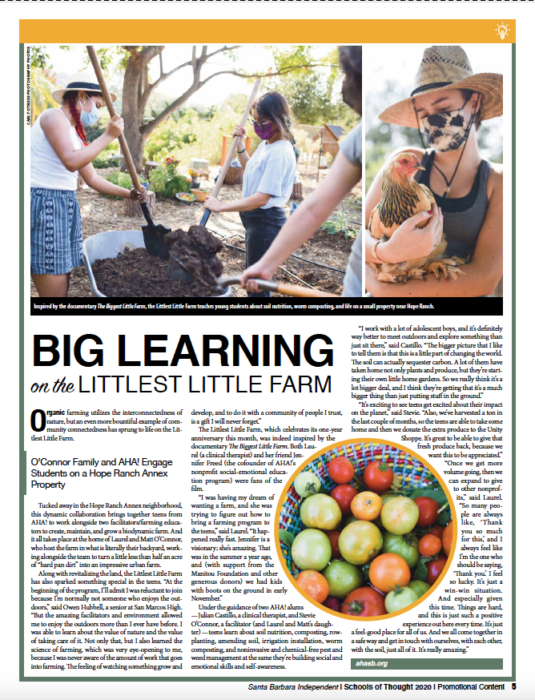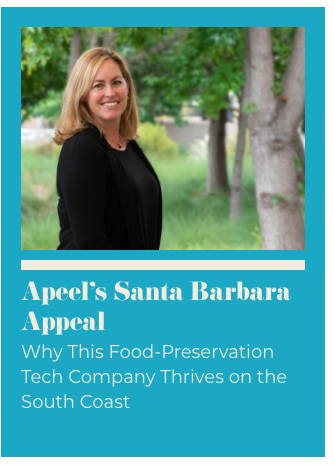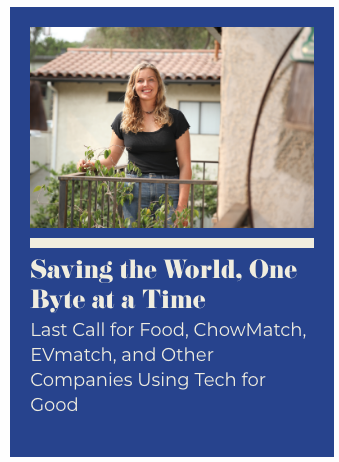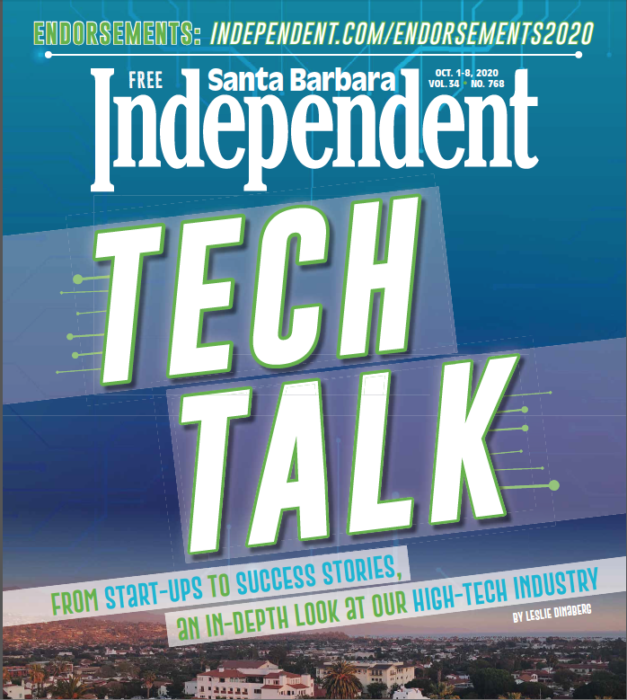
Tech Talk Special Issue for Santa Barbara Independent, published October 1, 2020.
From Start-ups to Success Stories, an In-Depth Look at Our Vast High-Tech Industry
There’s no question that technology plays an increasingly critical role in all of our lives.
Think about what it would have been like if the global pandemic had hit in 1980 instead of 2020: no cell phones (cordless phones weren’t even mainstream yet!), no internet, and no public email, let alone video calls, instant messaging, texting, and screen-sharing. Home computers, if you even had one, were clunky and slow, and, while ubiquitous, TVs only had four channels, and the whole family would have to agree on what to watch.
Fast-forward to today. With COVID forcing us to move our lives indoors and online, everyone from toddlers to grandparents have been whiplashed into relying on devices for school and business, health and wellness, to learn, communicate, connect, and be entertained. For many of us, the classroom, home, and workplace are headquartered on a single device in a tiny corner of the house.
“Organizations are fundamentally changed now,” explains Kyle Lewis, a UCSB professor and chair of its Technology Management Program. “Working in any type of organization — especially in one that is focusing on innovation, has technology products, or uses technology to do their work — the world has completely shifted.”
The shift is happening in Santa Barbara too. As technology becomes more central to all of our lives, the region’s high-tech sector is enduring big changes and enjoying sustained growth. Once dominated by the aerospace industry, which is still a prominent player, a wave of significant, broad-ranging tech companies began in this ecosystem, including Citrix Online (formerly Expert City), Software.com, Alias Wavefront, Yardi, Lynda.com, AppFolio, and Sonos, among others. Maturing startups such as Procore and Apeel Sciences continue to grow, as do the wealth of exciting new technologies and companies.
Meanwhile, our investment community is on the rise, and the already-critical UCSB just keeps getting better and better, pumping out more and more motivated-to-stay-in-town entrepreneurial energy.
Meanwhile, some of the biggest players in tech — Google, Amazon, Zoom, Apple, Microsoft — now have a presence in Santa Barbara. And then there are the increasing numbers of tech pros who can work from anywhere and have chosen to make Santa Barbara their homes.
The last time the Santa Barbara Independent addressed the tech sector in any depth was a special section called Tech-Topia in 2015, in which author Matt Kettmann described the scene as “quietly booming.” Having talked to more than 30 executives and researched more than 100 tech companies for this issue, I can attest to how much bigger, broader, and more interesting our tech sector is today.
Like a lot of the very best people and things in Santa Barbara, many of these tech companies still operate on the down-low, not interested in tooting their own horns or bragging about their accomplishments. They’d rather just do good work than talk about it.
But success begets success. As Jason Spievak, the managing partner for Entrada Ventures, put it, “Some of the biggest names in technology are waking up to Santa Barbara and are establishing themselves here through acquisition and investment.”
Read on for a hefty helping of the Santa Barbara tech scene’s players, history, innovations, and opportunities. Once quietly booming, I’d say Santa Barbara’s tech sector is now awake, ready, and raring to go.
Here is the whole package of stories:
Tech Employers Talk Balk : Observations From Central Coast Industry Leaders
The Top Five Things Investors Want (and Need) Jason Spievak of Santa Barbara’s Entrada Ventures Offers Checklist for New Companies
Mentoring, Not Just Money, For Startups: Entrada Ventures’ Julie Henley McNamara Discusses her Firm’s Specialized Strategies
Investor Insight into Tech Trends: Santa Barbara Angel Alliance Founder John Petote Analyzes the High-Tech Marketplace
A Great Place For Entrepreneurs: Veteran Executive John Greathouse Explains What Attracts Tech Companies to Town
Shades of Silicon Valley: Q&A With Michael Pfau: “Grit & Hustle” Understanding Santa Barbara’s Tech Sector Growth
ParentSquare Makes the Grade: Santa Barbara’s Anupamu Vaid Developed School Communication Platform Now Used Nationwide
Sprigeo Says Yes to School Safety: Santa Barbara’s Joe Bruzzese Founded Service to Prevent Bullying and Increase School Safety
Saving the World, One Byte at a Time: Last Call for Food, ChowMatch, EV Match and Other Companies Using Tech for Good
Apeel’s Santa Barbara Appeal: Why This Food-Preservation Tech Company Thrives on the South Coast
Insight From HG Insights’ Elizabeth Cholawsky: CEO of the Santa Barbara Tech Intelligence Company Talks Up the Central Coast Lifestyle
Invoca Applies AI and Analytics to Phone Calls: Studying the Behavior of Customers’ Customers
The Cutting Edge of Robotic Surgery: Cottage Health and the Orthopedic Institute Perform Many Surgeries Every Week
Virtual Health Care: Right Here at Home: After Acquiring Goleta’s InTouch Health, Teledoc’s Joe DeVito Discusses the Market
Communication is Key for WELL Health: Guillaume de Zwirek Moved Patient-Provider Platform Company From Silicon Valley to Santa Barbara
Thermal Imaging: Hotspot for Seeking Heat: FLIR and Seek Thermal Make Santa Barbara a Hub for Thermal-Imaging Technology Companies
How FLIR Steals Moments in Spotlight: Goleta-Based Imaging Company Stars in Movies, TV Episodes and Even Awards Shows
TMP: Practical Education for an Evolving World: Preparation Meets Opportunity in UCSB’s Technology Management Program
UCSB Technology Management Program’s Startups: A List of More Than 30 Companies Whose Founders Participated in TMP
TIA: Where Inventions Meet Industry: Research Meets the Road in UCSB’s Office of Technology & Industry Alliances
UCSB’s Technology and Research Startups: A List of More Than 40 Companies That Began on the Santa Barbara Campus
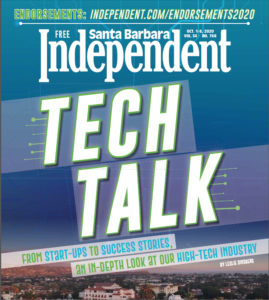
Tech Talk Special Issue for Santa Barbara Independent, published October 1, 2020.
Tech Talk Special Issue for the Santa Barbara Independent, originally published on October 1, 2020.
To read the issue as it appeared in print, please click here, Tech Talk 768_10_01_20
